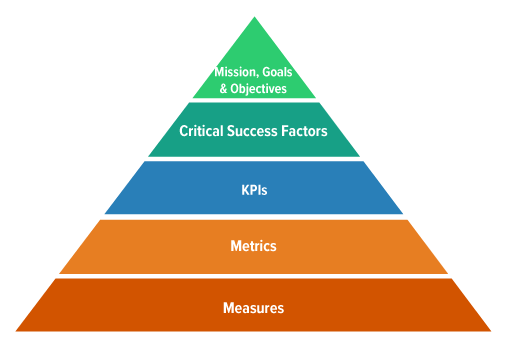
5 Top Tips for Better ITAM Metrics
IT asset management (ITAM) is a powerful IT management activity that saves your organization time and money and minimizes risk; but all too often people forget to quantify the benefits realized, which in turn continues to justify the ongoing investment in ITAM people, processes, and technology.
The management of IT assets – whether it’s hardware, software, proof of license, contracts, or vendor-related information – needs the right controls and checks in place to remain effective. But the use of the right metrics and key performance indicators (KPIs) not only ensures that everything is running efficiently and effectively, the availability of data and information is also critical in understanding the ITAM status quo and the action necessary to reduce business exposure, reduce costs, or to improve operations at both a business and ITAM level.
This blog highlights five top tips for measuring the performance of your ITAM activities that will allow you to not only look back on past performance but also look forward in terms of improvement opportunities.

1. Understand Why Reporting Matters
Sometimes when we are scoping or reviewing our reporting needs we get too caught up in fancy charts and dashboards when actually, all our stakeholders want to know is whether budgetary, regulatory and compliance, and efficiency requirements are being met. You should know that us IT pros sometimes overcomplicate things when we can.
Having a solid reporting framework in place will enable your organization to get a sense check on:
- Scale – the number of platforms, assets, and software applications, plus complexity and change volumes.
- Results – for example: How well is the ITAM process performing? What are the current asset usage rates? How quickly can assets be provisioned? What are the customer satisfaction measurements?
- Financial – for example: What is the return on investment? What new money is spent versus money saved or cost reduction? How is asset depreciation being measured?
- Compliance – for example: How well are regulatory requirements being met? Does your organization have the correct policies, procedures, contracts, licenses, and audit evidence in place?
- Effectiveness and efficiency – including asset database accuracy and quality, percentage of assets for which installation and usage information is available, percentage of assets compliant with product standards, and percentage of assets with the appropriate licensing documentation.
Importantly, don’t measure just because you can. Instead, understand what you need to know and create your metrics and KPIs accordingly. And don’t start with possible metrics and KPIs (as Tips 3 and 4 outline below); first there’s a need to establish an ITAM mission and critical success factors (CSFs).
2. Look at the Potential Benefits
As already stated, metrics need a purpose which will commonly not only be the assessment of the ITAM status quo but also the need for forward planning and the identification of improvement activity.
When done well, metrics can also be used to:
- Gain buy-in from senior management and business stakeholders
- Promote your ITAM activities, showcasing wins and positive results
- Monitor process performance
- Act as a baseline to measure improvement, or deterioration, over time
- Support audit activity
- Account for resource use and justify future scalability
- Provide greater transparency into spend and value for both IT and the business
- Compare your organization against industry best practice and benchmarks
- Act as a source of support for future decision making
Metrics can be your best friend when it comes to justifying past and future ITAM investments.
3. Align ITAM to the Rest of the Business
Before you even start to think about the right metrics and KPIs to use, you need to understand the business context of ITAM and thus need to start with your customer(s) in mind.
This context can be crystalized through the use of an ITAM mission statement. It doesn’t have to be long, complicated, or fancy. But it does need to be a statement of intent for your ITAM team, your ways of working, and your overall ITAM activities.
For instance, an ITAM statement could be: “To manage our corporate IT assets effectively, efficiently, and safely so that we can maximize how our IT estate performs.”
But don’t make it a “mission impossible” from the outset – your ITAM capabilities and results will be limited by the amount of resources you initially have at your disposal. With successes then hopefully justifying more resources as ITAM proves its worth.
4. Design Your Critical Success Factors
Next come the CSFs – the next level down in the reporting hierarchy as per the pyramid diagram below – following directly on from the mission statement, taking the information held there and breaking it down into manageable chunks.

CSFs look at how you can achieve your mission. Examples CSFs for ITAM could include:
- To manage all assets in the production environment effectively
- To ensure that ITAM requirements are built in to all change assessments
- To work closely with customers and stakeholders to ensure ITAM activities improve while continuing to meet business needs
5. Underpin Everything with KPIs
Then finally, we have the KPIs and metrics that provide the level of granularity needed for organizations to know if they are hitting the agreed CSFs.
In case you’re unclear, KPIs differ from metrics as follows (using ITIL 2011 Glossary definitions):
- Metrics are “something that is measured and reported to help manage a process, IT service or activity.”
- KPIs “are used to measure the achievement of critical success factors. Many metrics may be measured, but only the most important of these are defined as key performance indicators and used to actively manage and report on the process, IT service or activity.”
All KPIs are metrics but not all metrics are KPIs.
KPIs should give you the detail on how you are performing at the day-to-day level and act as an early warning system such that if things are going wrong, you can act on them quickly.
Example KPIs for ITAM could include:
- Percentage assets under the control of an asset database
- Percentage of assets with appropriate licensing information and maintenance contracts
- Average age of assets
- Percentage of software vendors covered by current ITAM reporting
- Percentage of devices covered by your ITAM processes and tool
- Percentage of assets recognized by your ITAM tool
Ensure that your metrics, KPIs, and CSFs map all the way back to your mission statement and process goals. If your metrics are linked in a logical fashion, and your software asset management performance goes from green to amber (using red-amber-green statuses) during the month (e.g. threat of licensing breach/being under licensed), you can look at your KPIs, understand what has happened, and come up with an improvement plan.
Metrics and reporting might seem like too much effort when you’re trying to get your ITAM activities off the ground, but a little effort up front will keep your process on track, the right people accountable, and your regulatory requirements taken care of. Believe me – been there, done that!
Having the right measurements in place will ultimately ensure that your ITAM process is proactively defined, tracked, analyzed, actioned, and improved on – meaning that you can quickly and easily showcase process wins and allow for continuous improvement as your ITAM function matures.
What do you think? How do your report on your ITAM activities? Please let me know in the comments!






